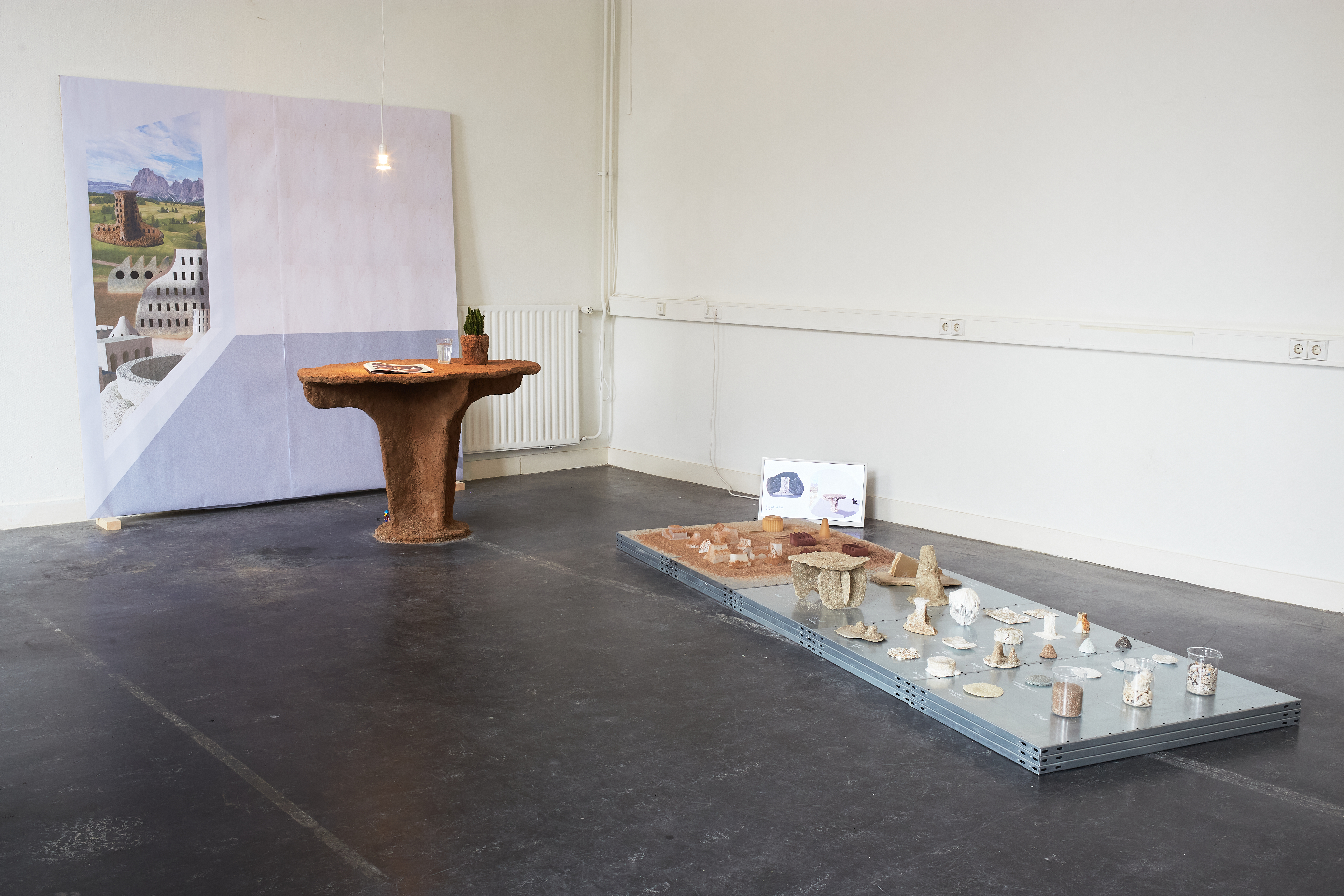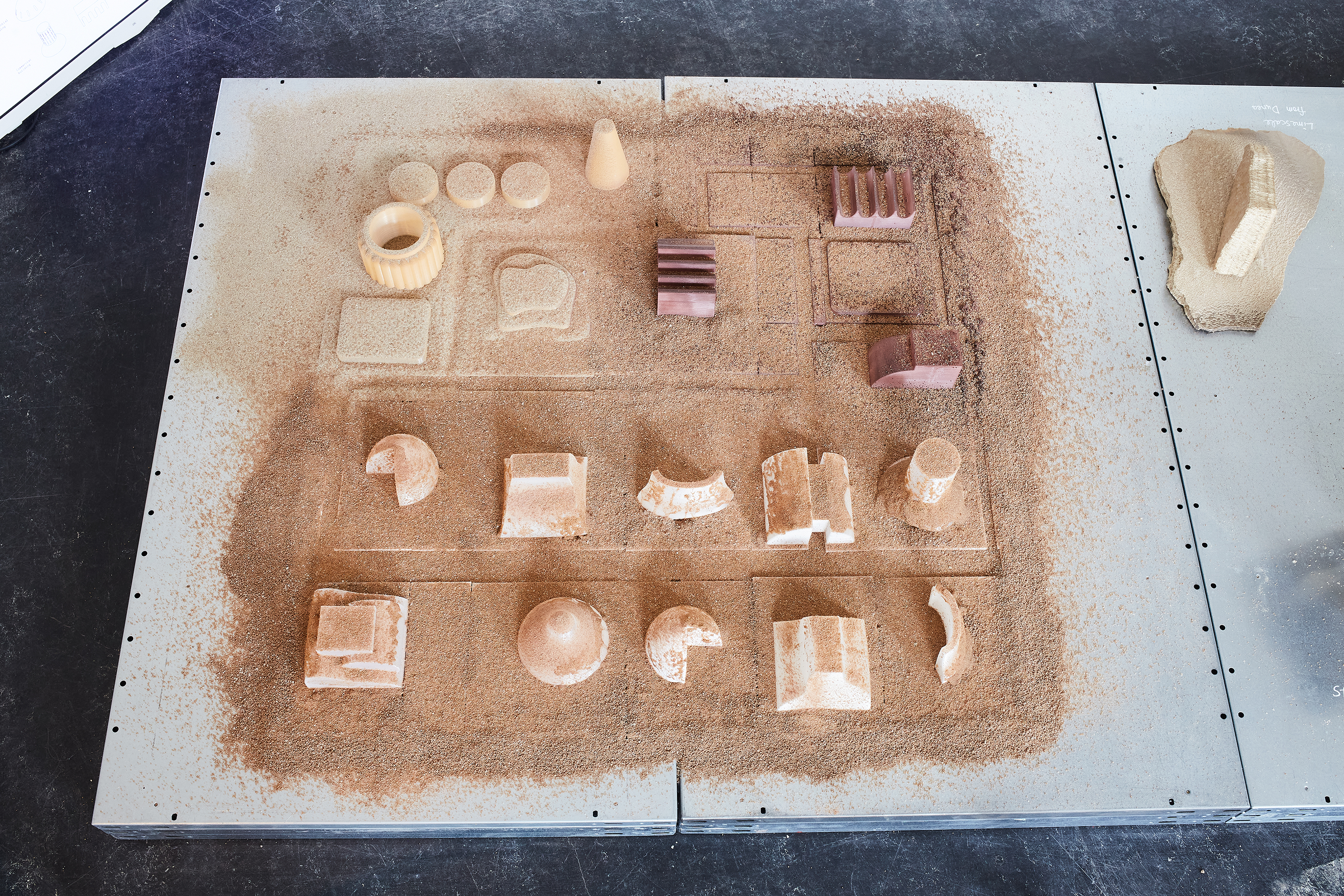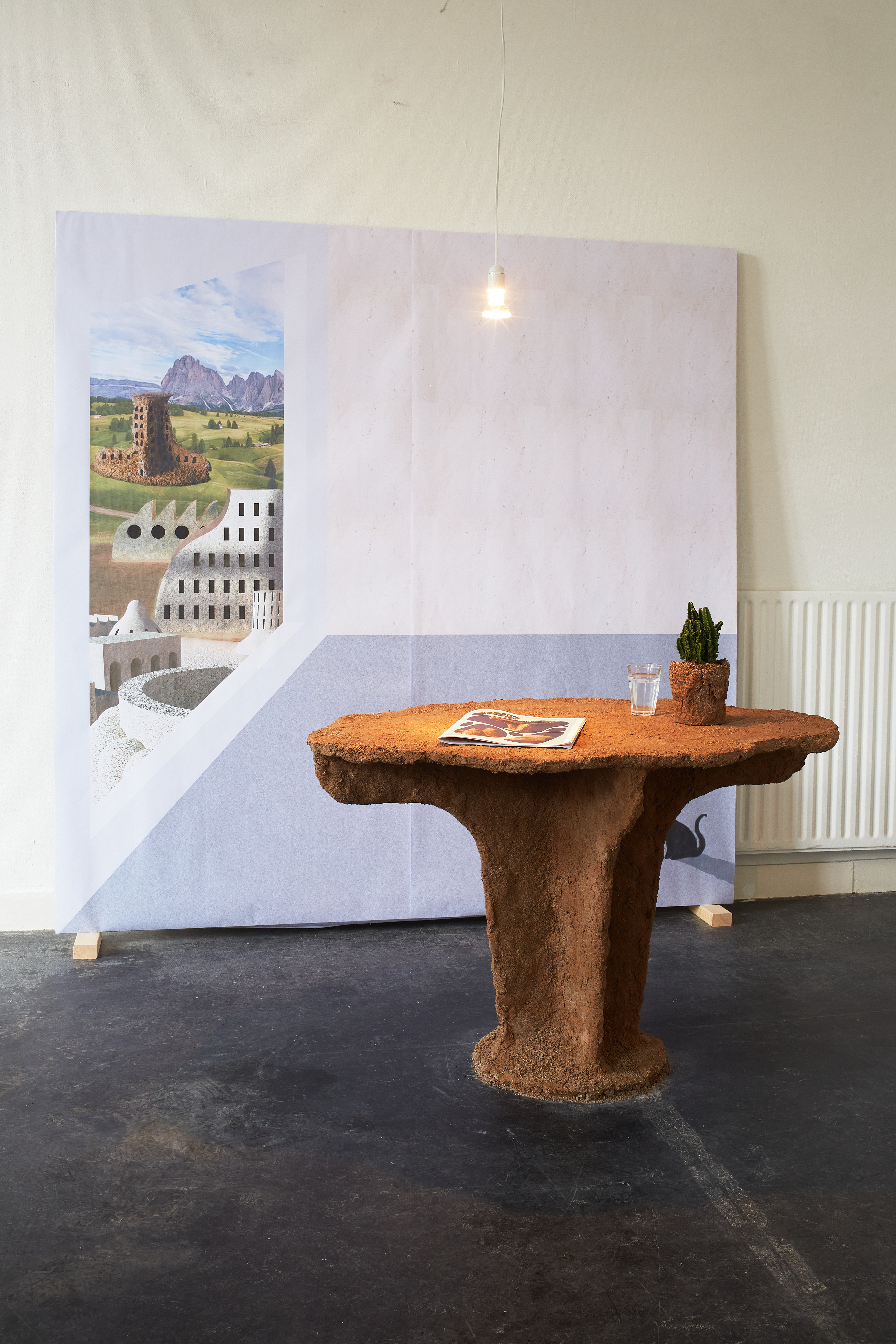Erco Lai
Neo Stone Age -
domesticating limestone

Neo Stone Age - domesticating limestone
Calcium carbonate is a common material widely spread on earth; we can find it in skeletons and in shells. It is dissolved in rivers and lakes. It builds up caves and mountains. It forms tufa and stalagmites. It has various applications in our life ranging from agriculture to the food and glass industry to cement production. One of our main sources of calcium carbonate is limestone. Most of the limestone we use comes from quarries: we extract it from the land and create messy "tailings" –pools with the unusable leftovers of this process– in the landscape. Could there be an alternative to this damaging process? Are there other ways to get the calcium carbonate we need?
‘Limescale’, a byproduct of the water softening process is an alternative source of calcium carbonate that is often overlooked. It is even considered a nuisance as we are eternally battling the limescale that builds up in our kettles, water boilers and hot water pipes. In my research, I attempt to reintroduce limescale as a promising material to build and live with. I research how to reconfigure limescale and focus on creating "geopolymers" –a chemical process to bind inorganic materials together. Based on my material research, I speculate about what a "neo stone age" could look like, and how the alternative harvesting and production method I propose could be integrated into the urban landscape.

“What does it mean to build today, how did building evolve over time and how shall we build in the future? For the main course of geological time, most shapes have grown by the principle of self-organization, whereby order emerges without a master controller. Matter, life and human consciousness cascaded into order as elements were organized into ever more complex shapes, fueled by a source of energy: geothermal heat, the sun and predation.”
Artist and Earth scientist-Esmee Geerken

“[...] how to speak about the Earth without taking it to be an already composed whole, without adding to it a coherence that it lacks, and yet without de-animating it by representing the organisms that keep the thin film of the critical zones alive as mere inert and passive passengers on a physio-chemical system?”
Sociologist and philosopher-Bruno Latour, Facing Gaia, 2017
Special thanks to:
Esmee Geerken, Earth scientist and artist; Lex Pott, designer and Arjan van Vessum, technician at Dunea.
Professional vision
‘We are at a turning point: on the one hand, we gradually realize that mainstream manufacturing methods have a strong impact on the earth and our environment; on the other hand, we attempt to fix problems from the human being's perspective, or even worse, only put an effort into short-term solutions. As a designer, I am interested in mimicking geo-systems in order to rethink manufacturing systems. As an Earth dweller, I wonder how to find a balance between control and self-organization, and work with the earth as an equal partner.’
 Text: Erco Lai
Text: Erco Lai